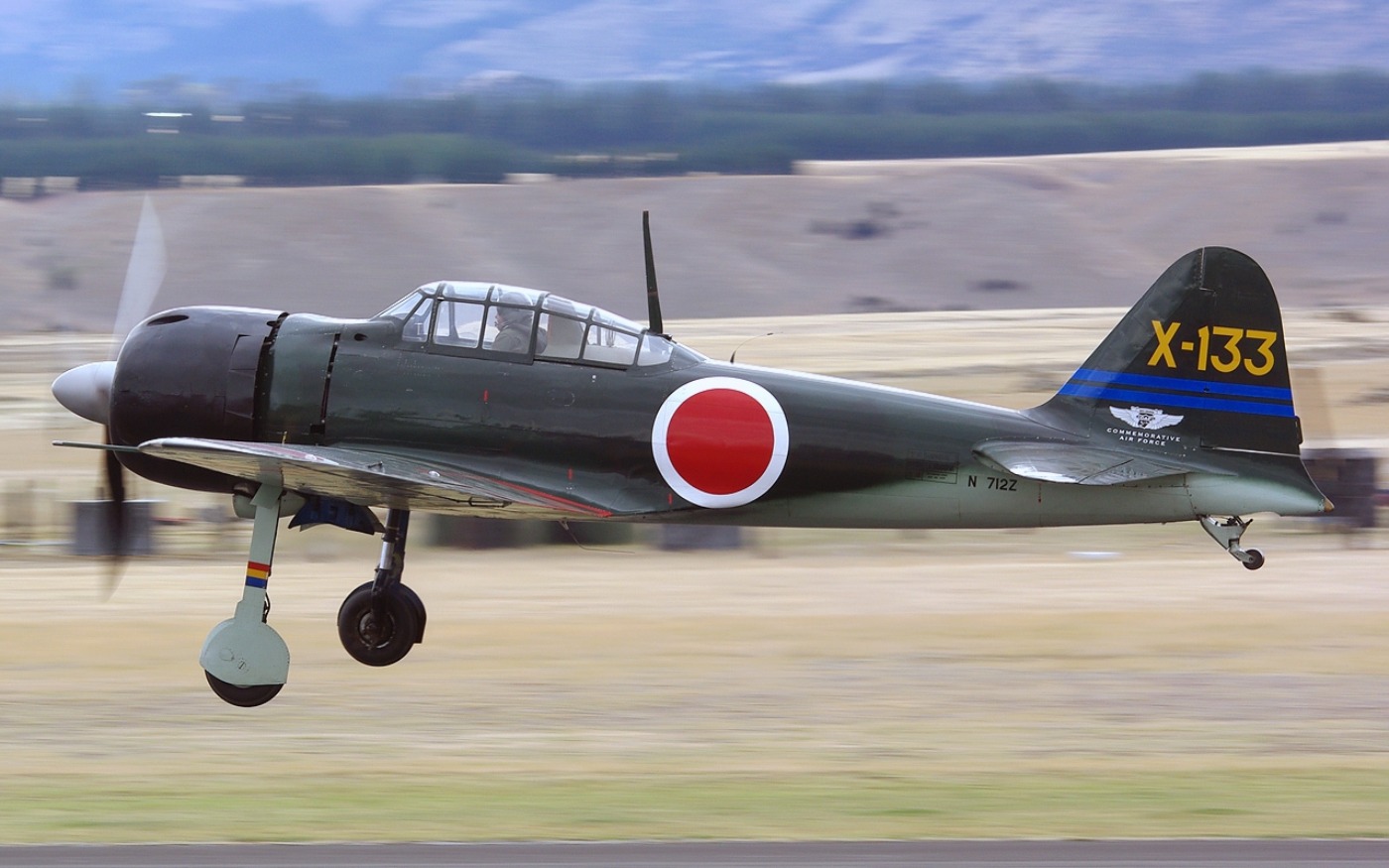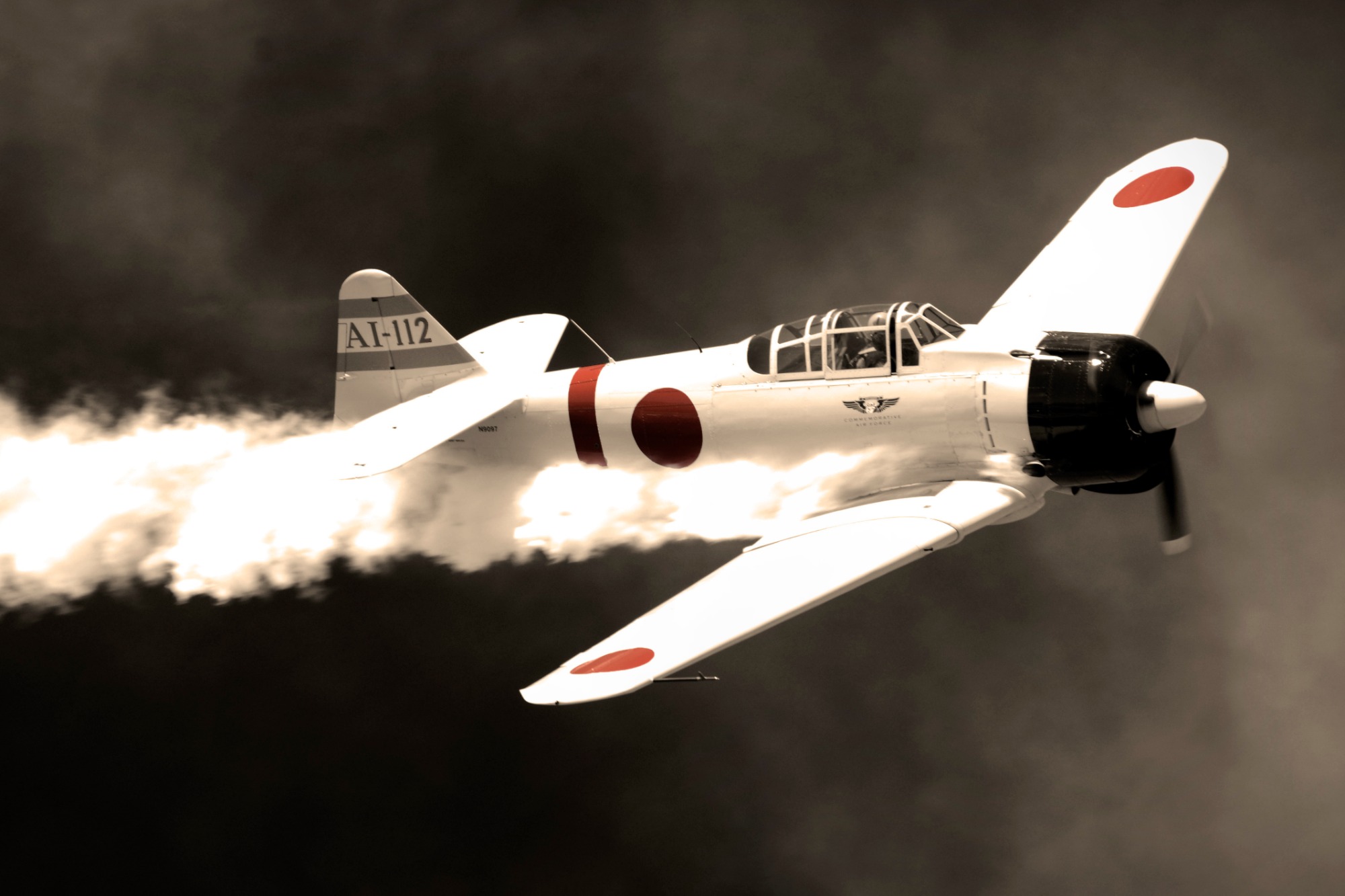Mitsubishi A6M Zero: The Best Fighter Plane of World War II?
Out of 10,939 Mitsubishi A6M Zeros built, roughly 30 (not counting replicas) survive today in seven different countries. Interestingly, one airworthy Zero has the original Sakae engine: an A6M5 with the Planes of Fame Air Museum in Chino, California.
Among all the famous WWII fighter planes I have written about, there is a notable absence: Imperial Japan’s most iconic and accomplished warbird of the conflict, the Mitsubishi A6M Zero.
I have made references aplenty to Japanese warplanes that served alongside the Zero, such as the Nakajima B5N torpedo bomber and the Aichi D3A dive bomber. I have also paid tribute to several American warplanes that fought against the Zero, also known as the “Zeke.”
The time has finally come for a writeup on the Zero itself.
Zen of the Mitsubishi A6M Zero: Early History & Specifications
The A6M made her maiden flight on April 1, 1939, and was officially introduced into operational service with the Imperial Japanese Navy Air Service on July 1, 1940. The plane was manufactured by Mitsubishi Heavy Industries, a company still very much involved in defense production, as seen in the modern F-2 Viper Zero and F-15J Peace Eagle jet fighters. The Zero’s chief designer, Jiro Horikoshi, began his work in 1937.
As noted by Russell Lee of the Smithsonian Air and Space Museum, “The Japanese official designation was Rei Shiki Sento Ki (Type 0 Fighter). Type 0 referred to the year of the emperor’s reign when production of Zero fighters began in 2600 on the imperial calendar (Julian calendar year 1940). Pilots called it the Zero even after the official codename became ‘Zeke’ in 1942.“
Specifications included a fuselage length of 29 feet 9 inches, a wingspan of 39 feet 4 inches, a height of 10 feet, an empty weight of 3,704 pounds, a maximum takeoff weight of 6,164 pounds, max airspeed of 331 miles per hour, a cruise speed of 207 mph, and a max range of 1,010 nautical miles.
Armament consisted of two 7.7 mm Type 97 machine guns in the engine cowling, and two 20 mm Type 99-1 Mk 3 cannon in the wings. Those of you who are fellow fans of the TV series “Black Sheep Squadron,” in which North American T-6 Texans were mocked up to portray Zeroes, might know the series only depicted the plane’s machine guns and conveniently ignored the cannons. Gotta love Hollywood!
Combat Performance: Terror of the Asia-Pacific Skies
“You can save those goddamn Zeroes for those other goddamn heroes/Distinguished Flying Crosses do not compensate for losses …You can save those Mitsubishis for those other sons of bitches/’Cause I’d rather lay a woman than be shot down in a Grumman…”
Thus go a couple of lines from the cynical and morbidly humorous WWII aviation song “I Wanted Wings,” performed by artists ranging from folk singer Oscar Brand to “fighter pilot’s minstrel” Dick Jonas. While sung in a humorous vein, those snippets reflect on the healthy respect that Allied fighter and bomber pilots held for that Japanese fighter.
Early in the war, no Allied fighter could match the Zeke’s speed and maneuverability, and the Japanese aircraft established a mind-boggling initial air-to-air kill ratio of 12:1. As noted by my colleague Sebastien Roblin, “The Zero debuted fantastically in combat in July 1940, with thirteen land-based A6M2 Zeros shooting down twice their number of Russian-built I-16 and I-153 fighters in a three-minute engagement.”

Arguably the most famous Zero pilot was Lt. (j.g.) Saburo Sakai, Japan’s third-ranking ace, who wrote about his exploits in his bestselling autobiography, Samurai! co-authored with Martin Caidin and Fred Saito.
Zenith of the Zero Fighter
The Zero’s reign of terror could not and would not last forever. By 1943, U.S. Army Air Forces started fielding the Lockheed P-38 Lightning, one of the first products from the legendary Skunk Works line. The aircraft was flown both by America’s “Ace of Aces,” Maj. Dick Bong, and second-place ace Maj. Thomas B. “Mickey” McGuire Jr. Meanwhile, the U.S. Navy and Marine Corps came up with the Grumman F6F Hellcat — which was flown by the Navy’s top-scoring ace, aviation history’s single-day kill record-holder, Capt. Dave McCampbell — and the Vought F4U Corsair, flown by top Marine ace Col. Gregory “Pappy” Boyington. These fighters finally matched the Zeke’s speed and maneuverability while also maintaining the survivability advantages bestowed by their predecessors’ armor and self-sealing fuel tanks.

These newer American warbirds soon started feasting on Zeroes and helped to establish Allied air superiority in the skies over the Pacific. The Zero’s lack of armor and self-sealing fuel tanks meant that the Japanese plane had a tendency to light up like a tinderbox when hit by a burst of .50 caliber machine gun fire from the American planes — and the Lightning’s 20mm cannon fire for good measure.
Meanwhile, the zaibatsu, the Japanese war industry, was not content to rest on its laurels. Japan started producing fighter planes such as the Kawasaki Ki-61 Hien, the Ki-100 Go-shiki sentouki and the Nakajima Ki-84 Hayate. These fighters had greater survivability than the Zero and were better matched in general against the newer U.S. fighters. However, these upgrades came too late to save Imperial Japan from its eventual doom.

The Zero continued to soldier on to the bloody, bitter end of the war, particularly in the kamikaze role.
Mitsubishi A6M Zero: Where Are They Now?
Out of 10,939 Zeroes built, roughly 30 (not counting replicas) survive today in seven different countries. Interestingly, one airworthy Zero has the original Sakae engine: an A6M5 with the Planes of Fame Air Museum in Chino, California.

About the Author
Christian D. Orr is a former U.S. Air Force Security Forces officer, Federal law enforcement officer, and private military contractor (with assignments worked in Iraq, the United Arab Emirates, Kosovo, Japan, Germany, and the Pentagon). Chris holds a B.A. in International Relations from the University of Southern California (USC) and an M.A. in Intelligence Studies (concentration in Terrorism Studies) from American Military University (AMU). He has also been published in The Daily Torch and The Journal of Intelligence and Cyber Security. Last but not least, he is a Companion of the Order of the Naval Order of the United States (NOUS).
All images are Creative Commons.


